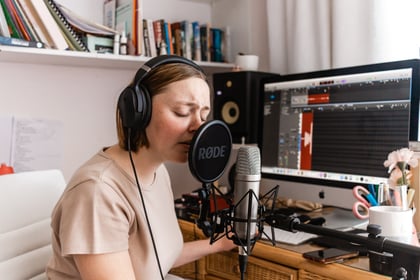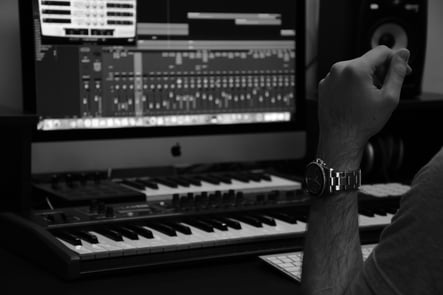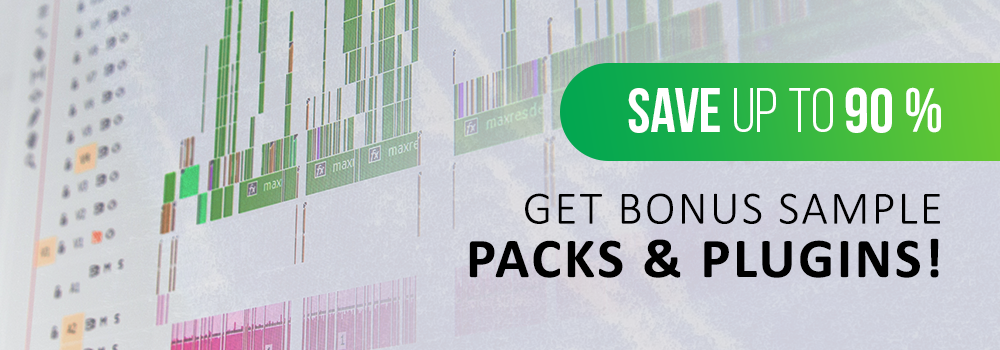Backing vocals aren't just a few more voices in a song. They have their own, quite definite task in the arrangement. In particular, backing vocals tend to add density to lead vocals in a complex tonal composition. And they are complementary melodic lines in the context of a harmonic melody. Whether you are just in the pre-recording stage or in the middle of the mixing process, it's never too late to make sure that the backing vocals fulfill their specific purpose. We don't know what kind of vocals problems are in your mixes, but here are some tips for mixing background vocals.
Recording studio
Before we start, a general tip is to take your studio space seriously. Even the most expensive equipment will not save if the room is not ready for recording and mixing. Professionals will undoubtedly do their job even in a barn, but we recommend not to complicate your life once again. A ready room will allow you to hear the slightest shift of the fader on the equalizer, any slight cut of the filter and finally feel the lows that the monitor gives out. If you are too zealous here, it is not worth it. The average person will do well in coworking spaces in different cities, coworking spaces in Phoenix, Washington, Denver, or wherever they are from. The chances are minimal that you will find the perfect room, find the perfect monitor position, and drown the room at the level of large studios. Prominent players also have disadvantages of the room, so the main thing is to understand the basic principles and try to get an acceptable sound from the room.
Mono tracks
If the backing vocals are a take for the main lead vocals, the density effect is easier to achieve by not splitting the vocals into stereo channels. Unfortunately, the tonal complexities and dynamic ranges of multiple vocalists can make mono backing vocals sound inconsistent or even confusing. To highlight the lead vocals as the mainline, try the following:
Limit the range of backing vocal lines with a high-pass filter (you can even start at 200 Hz without losing your intelligibility).
Limit the articulation and dynamics of backing vocals with a de-esser (even if the backing vocals aren't particularly sibilant).
When working with multiple vocal lines, you should never forget that each backing vocal should be listened to "in its place." The sound of duplicate backing vocals can produce the exact opposite effect and not amplify the lead vocals but, on the contrary, make them sound in isolation. Don't opt for duplicate backing vocals until you hear their positive effect on the lead vocals.
Power through symmetry
When the backing vocals act as additional melodic lines, the desired effect is much easier to achieve with symmetrical stereo separation. The purpose of mixing these backing vocals is to achieve a stereo instrument that clearly sounds different from the center lead vocal. Therefore, you need to think over the backing vocal parts even at the arrangement stage and record them immediately with takes.
If you come across this already at the mixing stage, this does not mean that you are out of luck with the arrangement. A simple symmetrical reflection of the backing vocals often sounds decent enough as a take.
Group processing
Whether you're mixing mono backing vocals that duplicate the lead vocals, or stereo backing vocals that lead a separate melodic line, the challenge is to make a group of separate audio tracks sound like one instrument. Batch processing is a quick and effective way to achieve this. For example, the only difference between nice-sounding stereo backing vocals and a set of voices in the background might be a split speaker. A stereo compressor that processes a backing vocals group will help you achieve dynamic and tonal stability within a group of signals. Processing tracks separately will not have this effect.
Final Thoughts
When creating a song, it's never too early to keep all of the above in mind. A well-planned arrangement can save hours of studio time during the mixing stage. Naturally, the above methods of mixing can be applied to backing vocals and guitars, wind instruments, keyboards, etc. Each instrument has its characteristics, but the concept of mixing is the same.





















_Cropped.png?width=1600&name=02%20(2)_Cropped.png)




















Your Comments :